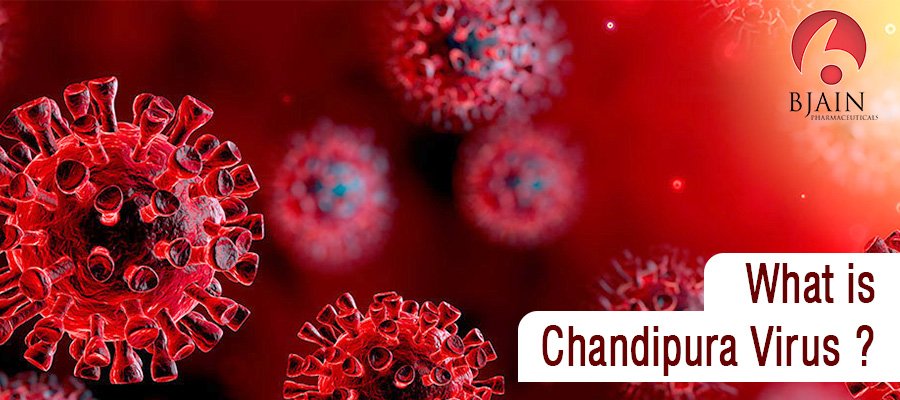Every day we encounter various pathogens such as bacteria, viruses, fungi, or other infectious agents in our daily routine. Out of those few can be more virulent causing mass infection and even fatalities. This new outbreak of the Chandipura virus is from the same virulent category.
You may wonder, why it is called the Chandipura virus. It was called after the place where it was originally discovered, Chandipura in Maharashtra, India, amidst an encephalitis epidemic in 1965.
What is the Chandipura virus?
The virus belongs to the family Rhabdoviridae, specifically the Vesiculovirus genus. This group of viruses also contains the rabies virus. According to the article, the Chandipura virus was initially discovered in 1965 from blood samples of two individuals suffering from a fever in a hamlet near Nagpur, Maharashtra.
Why is it spreading?
The virus comes from the Rhabdoviridae family that is predominantly carried by sandflies, namely Phlebotomus species. This illness is prevalent in regions of India, with sporadic occurrences recorded primarily during the rainy and post-rain seasons because sandfly numbers are highest at that time.
How can it get transmitted?
The virus is transmitted by vectors, the most likely of which are female Phlebotomine sandflies, which are common during the beginning of monsoon season.
Several mosquito species replicated and spread the virus through research, and Aedes aegypti (which also carries dengue) was discovered to be extremely vulnerable and capable of transmitting the virus more successfully than others in lab circumstances. However, it said that no viral isolation among the vector had been recorded up until that point.
What are the symptoms of Chandipura virus disease?
The Chandipura virus is an encephalitis-causing virus, which means it causes swelling as well as inflammation in brain cells. A significant epidemic of acute encephalitis with high death rates among kids in Andhra Pradesh, India, in 2003, related to the Chandipura virus, presented with subsequent clinical symptoms:
- Sudden appearance of fever, vomiting, and altered consciousness.
- Symptoms may include convulsions, diarrhea, and neurological deficits such as speech impairment, balance issues, and visual problems.
- Meningeal irritation symptoms can incorporate headaches, neck rigidity, light sensitivity, and convulsions.
Who is at risk?
The Chandipura virus was identified primarily in kids less than the age of 15, particularly in rural areas. In 2003 contamination impacted kids in Andhra Pradesh ranging in age from 9 months to 14 years. Most people died within 48 hours after being admitted to a medical facility. In the present epidemic in Gujarat, all alleged fatalities have been youngsters.
What are recent Highlights of the Current Outbreak?
In July 2024, the Sabarkantha area of Gujarat, India, witnessed a possible epidemic, mainly among youngsters. This probable epidemic has aroused major risks to public health because of its quick growth and the seriousness of the symptoms reported by those afflicted.
Is there any treatment available for this disease?
There is no particular antiviral drug for treating the Chandipura virus, and no vaccine is currently known. Quick detection and treatment are critical. The illness management comprises regulating airways, respiration, and circulation with oxygen supply and ventilation as needed. The monitoring of hydration and fluid balance, hyperprexia (a condition in which the body heats over 106.7 degrees Fahrenheit), elevated intracranial pressure and epileptic fits, and avoidance of subsequent bacterial infections are all covered.
What are the preventive measures against this disease?
No one can ensure immunity from being infected with any virus, but we can keep our surroundings in good condition to reduce the chance of infection as much as we can.
- Clean Environment: The Chandipura virus is primarily transmitted by sand flies that grow in waste, small, and unclean regions. Thus, it is vital to keep your surroundings clean. Avoid allowing water to stagnate. Keep children far from garbage cans in open spaces.
- Long-Sleeve Outfits: This is another critical stage that is sometimes disregarded and undervalued. Choose light clothing that covers your entire body. It will assist in limiting the chance of being stung or contracted by sandflies or the bites of mosquitoes particularly if the virus spreads like lightning.
- Insect Repellants: Insect killer spray may assist in eradicating the carrier insect, according to specialists, who also advocate for steps that will keep the virus from spreading by decreasing sandfly counts.
- Bedding Nets: Another health measure is to use bug repellent and mosquito nets when sleeping.
- Maintain Your Health: A rich in nutrients diet that boosts resistance is also required to resist infections.
When to visit your Physician?
If you experience any of the above-mentioned symptoms in you and your family, especially children then immediately visit your doctor. Early diagnosis can prevent severe health conditions and it can lead to a better prognosis.
Frequently Asked Questions (FAQs)
Q. How to cure Chandipura virus?
Ans. The Chandipura virus has no particular antiviral medication or vaccine, thus early detection and symptoms-based treatment are the only options.
Q. How to be safe from the Chandipura virus?
Ans. Staying protected against the Chandipura virus entails taking preventative precautions to avert sandfly bites, which are the primary means of spread. Residents in areas where it is endemic, especially during maximum dissemination seasons such as the monsoon and post-monsoon, should apply DEET-containing insecticides to their skin, wear trousers and long sleeves, and utilize insecticide-treated bed nets. Additionally, limiting going outside between dark and sunrise, when sandflies tend to be active, might reduce exposure. Community-wide activities, such as pesticide spraying to minimize sandfly populations and raising knowledge about symptoms to enable early medical care, are also crucial in reducing the propagation of the Chandipura virus.
Q. Which virus spread in Gujarat?
Ans. Cases of the Chandipura virus have significantly increased, especially in communities that are susceptible to the epidemic. The female sandfly, known to be especially prevalent in the initial rainy season, is the vector of the disease.

Dr Kiran Swami
Dr. Kiran Swami, BHMS, MD (Hom.), a Research Officer at BJain Pharmaceuticals Pvt. Ltd., holds degrees from Nehru Homeopathic Medical College, Delhi, and Dr. Sarvepalli Radhakrishnan Rajasthan Ayurved University, Jodhpur. With expertise in homeopathy and a passion for research, she drives innovation in holistic healthcare solutions.


